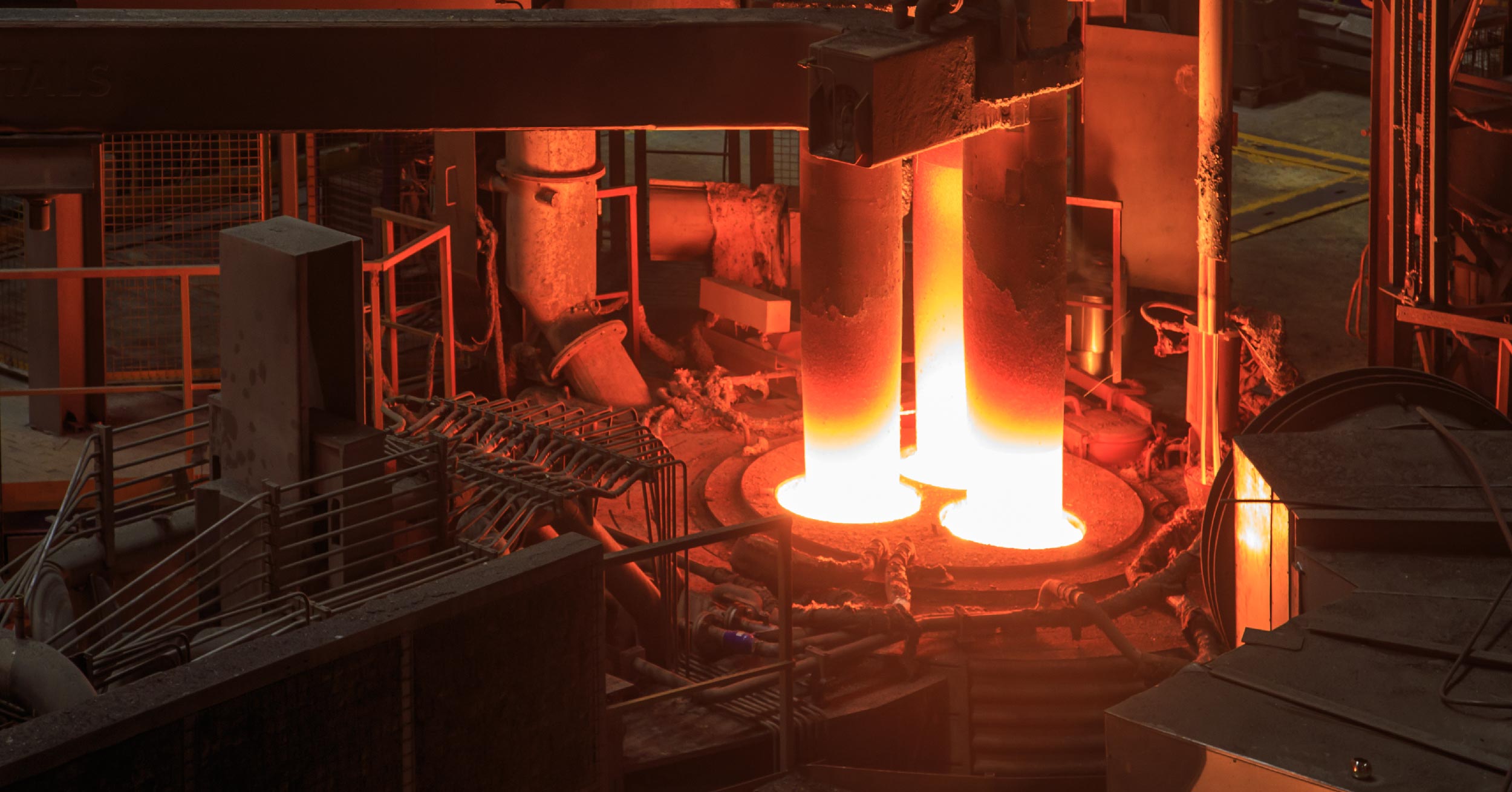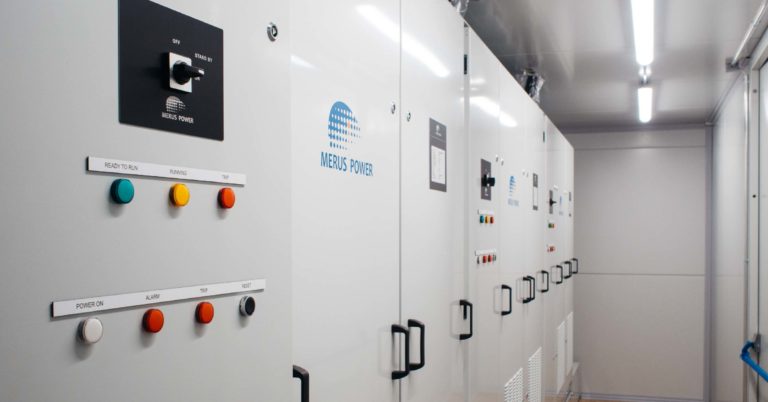Merus® STATCOM – Static Synchronous Compensator
Merus® STATCOM is a modular and modern Static Synchronous Compensator for demanding applications and heavy industrial loads.

Our customer’s steel plant operating on a weak grid in South America has an EAF rated at 24 MVA and an LF rated at 5 MVA. The customer was facing rapid fluctuations of reactive power, caused by these high-power furnaces. It is typical for these types of loads to cause high voltage instability when connected to a weak grid. This fluctuation in reactive power and voltage is mainly caused by the dynamic operation of the EAF, which has a dominating effect on the power quality compared to the LF with a much smaller rating and more stable operation. Nevertheless, both the EAF and LF generate harmonic currents, which cause harmonic voltages when flowing through the system impedances.
For the customer to be able to operate the steel plant that is connected to a weak grid, Merus Power delivered a 5 MVAr (ind) to 35 MVAr (cap) Static Synchronous Compensator (STATCOM) solution. Merus Power was responsible for the complete delivery of the Merus® STATCOM system as a project. The total compensation of 35 MVAr was divided between active compensation and fixed compensation. 20 MVAr of active compensation was provided by 10 pcs of Merus® M2000 STATCOM modules, whereas the remaining 15 MVAr were fixed filter capacitor banks. The installed Merus® STATCOM solution can control reactive power seamlessly and in real-time between 5 MVAr (inductive) and 35 MVAr (capacitive) for an undefined period. Short-time overloading allows compensation capacity between 13 MVAr (inductive) and 43 MVAr (capacitive).
The real-time response of Merus® STATCOM met the dynamic reactive power demand created by the EAF operation efficiently and reduced the voltage flicker significantly.
Post-commissioning performance measurements showed an 80% decrease in reactive power between measurements taken from the EAF and the point of common coupling (PCC). It was also measured from the PCC that the maximum value for the short-term flicker is less than 1.0 .u., maximum voltage unbalance is less than 0.80% and maximum THD is 3%, which are well within the limits of IEC 61000-4-30, IEC 61000-2-12, and IEC 61000-3-6.
The lower reactive power demand, excellent flicker, harmonics mitigation, and overall power quality improvements resulted in increased productivity, reduced losses, improved tap-to-tap time, and reduced electrode consumption. These are achieved by improved arc stability of the EAF process.
Steel plant with Electric Arc Furnace (EAF) and Ladle Furnace (LF)
Bolivia, South America

Merus® STATCOM is a modular and modern Static Synchronous Compensator for demanding applications and heavy industrial loads.
Please contact one of our salespeople with questions and inquiries.


